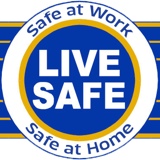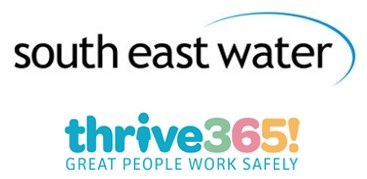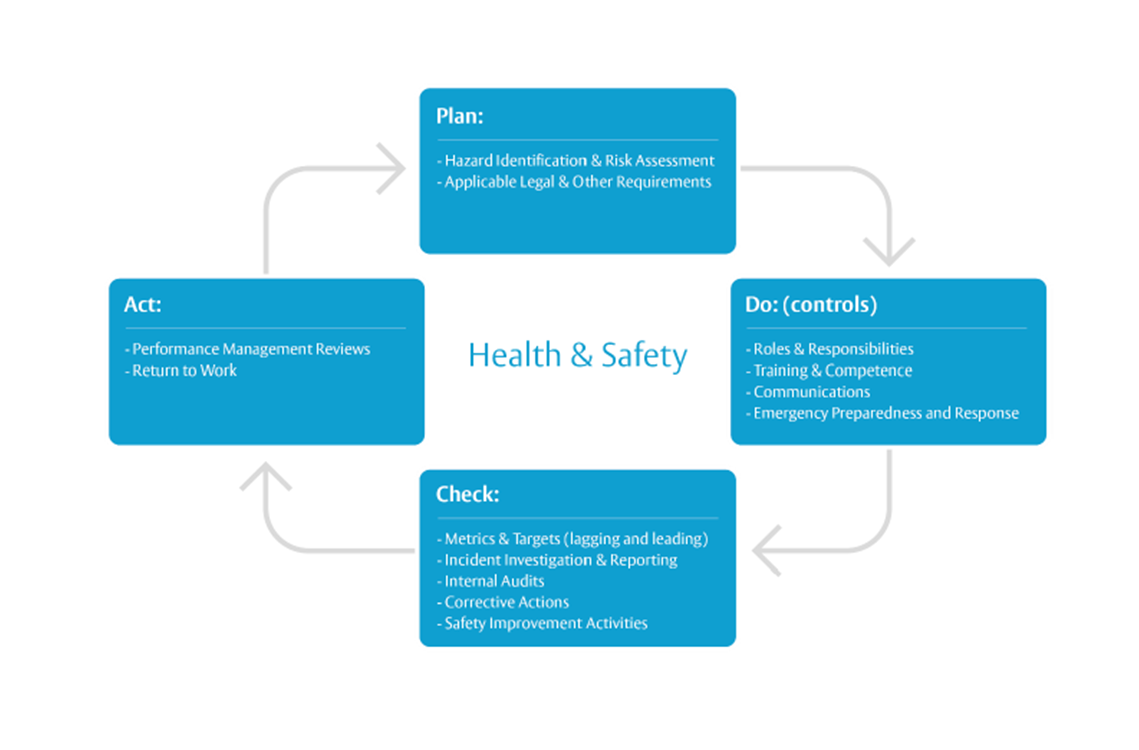Information
-
Document No.
-
Site
-
Conducted on
-
Prepared by
Safety Programs
-
Hazard tracking log being worked.
-
Who is responsible for fix?
- Facility FX
- ORDCG
- CONTRACTOR
- ORDMM
- ORDCS
- VENDOR
- Airport Authority
- Ground Equipment Maintenance (GQ)
-
Safety meeting minutes avalible
-
Who is responsible for fix?
- Facility FX
- ORDCG
- CONTRACTOR
- ORDMM
- ORDCS
- VENDOR
- Airport Authority
- Ground Equipment Maintenance (GQ)
-
Is safety board updated?
-
Who is responsible for fix?
- Facility FX
- ORDCG
- CONTRACTOR
- ORDMM
- ORDCS
- VENDOR
- Airport Authority
- Ground Equipment Maintenance (GQ)
Fire prevention and Emergency Action Plan.
-
Has EAP, Hot work permit & Fire Extinguisher toolbox talk been briefed and posted this quarter?
-
Evacuation routes posted
-
Who is responsible for fix?
- Facility FX
- ORDCG
- CONTRACTOR
- ORDMM
- ORDCS
- VENDOR
- Airport Authority
- Ground Equipment Maintenance (GQ)
-
Flammable materials are stored in the correct fire cabinets
-
Who is responsible for fix?
- Facility FX
- ORDCG
- CONTRACTOR
- ORDMM
- ORDCS
- VENDOR
- Airport Authority
- Ground Equipment Maintenance (GQ)
-
Exit route are clear and unobstructed.
-
Who is responsible for fix?
- Facility FX
- ORDCG
- CONTRACTOR
- ORDMM
- ORDCS
- VENDOR
- Airport Authority
- Ground Equipment Maintenance (GQ)
-
Flammable cabinets are in good operating condition and free of unmarked goods, no corrosives and no combustibles
-
Who is responsible for fix?
- Facility FX
- ORDCG
- CONTRACTOR
- ORDMM
- ORDCS
- VENDOR
- Airport Authority
- Ground Equipment Maintenance (GQ)
-
Emergency exits are lit by emergency lighting and self-illuminated exit signs.
-
Who is responsible for fix?
- Facility FX
- ORDCG
- CONTRACTOR
- ORDMM
- ORDCS
- VENDOR
- Airport Authority
- Ground Equipment Maintenance (GQ)
-
Fire extinguishers are in good condition, not blocked, and are being checked once per month.
-
Who is responsible for fix?
- Facility FX
- ORDCG
- CONTRACTOR
- ORDMM
- ORDCS
- VENDOR
- Airport Authority
- Ground Equipment Maintenance (GQ)
-
Audit Hot Work Permit program are expired permits on file
-
Who is responsible for fix?
- Facility FX
- ORDCG
- CONTRACTOR
- ORDMM
- ORDCS
- VENDOR
- Airport Authority
- Ground Equipment Maintenance (GQ)
-
Do personal space heaters meet GSM requirements?
-
If a room is sprinkled, the system will not work if there is less than 18" vertical clearance between the sprinkler head and materials below.
-
Who is responsible for fix?
- Facility FX
- ORDCG
- CONTRACTOR
- ORDMM
- ORDCS
- VENDOR
- Airport Authority
- Ground Equipment Maintenance (GQ)
-
Compressed gas cylinders are kept away from heat and are restrained to prevent tipping or rolling.
-
Who is responsible for fix?
- Facility FX
- ORDCG
- CONTRACTOR
- ORDMM
- ORDCS
- VENDOR
- Airport Authority
- Ground Equipment Maintenance (GQ)
-
Are compressed gas cylinders labeled and stored according to GSM (Oxy at least 20' from acetylene)
Housekeeping, walking, working surfaces.
-
Has Housekeeping toolbox talk been briefed and posted this quarter?
-
Is area free of clutter and debris?
-
Storage of materials must not create a hazard. Not stacked unstable.
-
Who is responsible for fix?
- Facility FX
- ORDCG
- CONTRACTOR
- ORDMM
- ORDCS
- VENDOR
- Airport Authority
- Ground Equipment Maintenance (GQ)
-
Walking and working surfaces must be kept in a clean and safe condition.
-
Who is responsible for fix?
- Facility FX
- ORDCG
- CONTRACTOR
- ORDMM
- ORDCS
- VENDOR
- Airport Authority
- Ground Equipment Maintenance (GQ)
-
Shelving systems must be in good condition, anchored, and free of damage. Industrial systems must be load rated and placarded.
-
Who is responsible for fix?
- Facility FX
- ORDCG
- CONTRACTOR
- ORDMM
- ORDCS
- VENDOR
- Airport Authority
- Ground Equipment Maintenance (GQ)
-
Any platform higher then 4 feet (3 in California) must be guarded against falls.
-
Who is responsible for fix?
- Facility FX
- ORDCG
- CONTRACTOR
- ORDMM
- ORDCS
- VENDOR
- Airport Authority
- Ground Equipment Maintenance (GQ)
-
Unguarded holes, trip hazards, ledges, or anything else that could cause a slip, trip, or fall, must be guarded, covered, or otherwise protected.
-
Who is responsible for fix?
- Facility FX
- ORDCG
- CONTRACTOR
- ORDMM
- ORDCS
- VENDOR
- Airport Authority
- Ground Equipment Maintenance (GQ)
-
Is area included in the station pest control program?
-
Is area free of visible signs of mold, animal or bird bio-hazards?
Hazard Communication
-
Has HazCom toolbox talk on SDS in MAXCOM been briefed and posted this quarter?
-
Who is responsible for fix?
- Facility FX
- ORDCG
- CONTRACTOR
- ORDMM
- ORDCS
- VENDOR
- Airport Authority
- Ground Equipment Maintenance (GQ)
-
Eye wash stations and showers are in good condition, are functional, and are checked for operation once a month.
-
All secondary containers are labeled with the name of the chemical within (sharpie marker is suitable). This must be done for non-hazardous chemicals as well (such as water).
-
Who is responsible for fix?
- Facility FX
- ORDCG
- CONTRACTOR
- ORDMM
- ORDCS
- VENDOR
- Airport Authority
- Ground Equipment Maintenance (GQ)
-
Any place where working with corrosive materials, such as battery charging and maintenance locations, have a plumbed eyewash near by.
-
Who is responsible for fix?
- Facility FX
- ORDCG
- CONTRACTOR
- ORDMM
- ORDCS
- VENDOR
- Airport Authority
- Ground Equipment Maintenance (GQ)
-
Are flam cabinets properly marked with labels, directions to MAXCOM etc.
Electrical safety
-
Have electrical safety toolbox talks been briefed and posted this quarter?
-
Inspect Arc Flash Gear and sign off on log sheet
-
-
Electrical panels must be clear of obstruction, have easy access, and the door must be closed.
-
Who is responsible for fix?
- Facility FX
- ORDCG
- CONTRACTOR
- ORDMM
- ORDCS
- VENDOR
- Airport Authority
- Ground Equipment Maintenance (GQ)
-
Extension cords used as permanent wiring must be removed. Daisy chaining (plugging and extension cord into another extension cord) is never safe.
-
Who is responsible for fix?
- Facility FX
- ORDCG
- CONTRACTOR
- ORDMM
- ORDCS
- VENDOR
- Airport Authority
- Ground Equipment Maintenance (GQ)
-
Electrical cords must be protected from accidental damage and be removed if found to have damage.
-
Who is responsible for fix?
- Facility FX
- ORDCG
- CONTRACTOR
- ORDMM
- ORDCS
- VENDOR
- Airport Authority
- Ground Equipment Maintenance (GQ)
-
Lightning fixtures less than 7 feet from the floor or in storage areas should be covered/guarded.
-
Who is responsible for fix?
- Facility FX
- ORDCG
- CONTRACTOR
- ORDMM
- ORDCS
- VENDOR
- Airport Authority
- Ground Equipment Maintenance (GQ)
-
All appliances (coffee makers, refrigerators, toasters, etc) must be plugged directly into the wall.
-
Who is responsible for fix?
- Facility FX
- ORDCG
- CONTRACTOR
- ORDMM
- ORDCS
- VENDOR
- Airport Authority
- Ground Equipment Maintenance (GQ)
-
All pull boxes, junction boxes, switches, and outlets must be covered. No missing knock outs
-
Has a an electrical hazard assessment been completed?
-
Who is responsible for fix?
- Facility FX
- ORDCG
- CONTRACTOR
- ORDMM
- ORDCS
- VENDOR
- Airport Authority
- Ground Equipment Maintenance (GQ)
-
Are employees current with electrical hazard training?
-
Are electrical PPE and insulated tools available?
Lock Out Tag Out (LOTO)
-
Has LOTO toolbox talk been briefed and posted this quarter?
-
Have written LOTO procedures been developed for multi energy source equipment and available.
-
Is transitional LOTO log book updated and acurate?
-
Who is responsible for fix?
- Facility FX
- ORDCG
- CONTRACTOR
- ORDMM
- ORDCS
- VENDOR
- Airport Authority
- Ground Equipment Maintenance (GQ)
-
Are Lock Out procedures grouped and verified annually?
Machine Gaurding
-
Has Machine Guarding toolbox talk been briefed and posted this quarter?
-
Exposed shafting, gears, and chains less than 7 feet from the floor or working platform must be guarded in the bag room or anywhere else on the property.
-
Who is responsible for fix?
- Facility FX
- ORDCG
- CONTRACTOR
- ORDMM
- ORDCS
- VENDOR
- Airport Authority
- Ground Equipment Maintenance (GQ)
-
Are grinding wheel tool rests 1/8" and tongue guard 1/4"?
-
Is the machine shop machine guarding inspection book current?
Personal Protection Equipment (PPE)
-
Has PPE Toolbox talk been briefed and posted this quarter?
-
Is Hearing protection available for employee use
-
Are safety glasses available?
-
High visibility vests are used on the ramp and in low visibility areas such as some bag rooms.
-
Who is responsible for fix?
- Facility FX
- ORDCG
- CONTRACTOR
- ORDMM
- ORDCS
- VENDOR
- Airport Authority
- Ground Equipment Maintenance (GQ)
Ladders and Handrails
-
Inspect ladders in area. Look for bent rungs, missing rivots, damaged load labels. Any damage must red tag.<br>
-
Opening in hand/Guard Rails must have chains or gates to prevent falls.
-
Inspect Fall Protection Gear
-
Hearing protection is used in high noise areas.
-
Who is responsible for fix?
- Facility FX
- ORDCG
- CONTRACTOR
- ORDMM
- ORDCS
- VENDOR
- Airport Authority
- Ground Equipment Maintenance (GQ)
-
Respirator protection
-
Has Respirator toolbox talk been briefed and posted this quarter?
-
Are N95 & P95 Respirators available for voluntary use and have all mechanics been signed off on Appendix D in MITSI ?


















